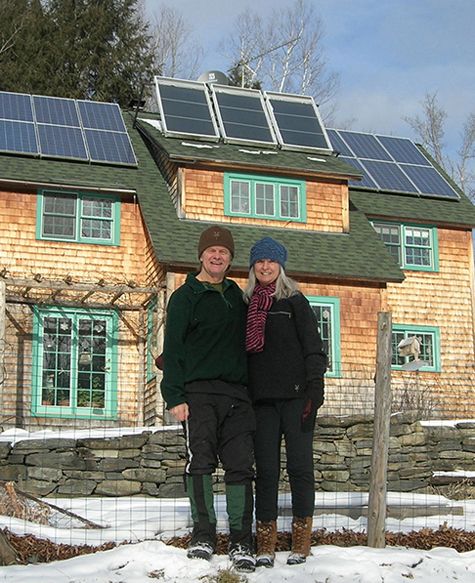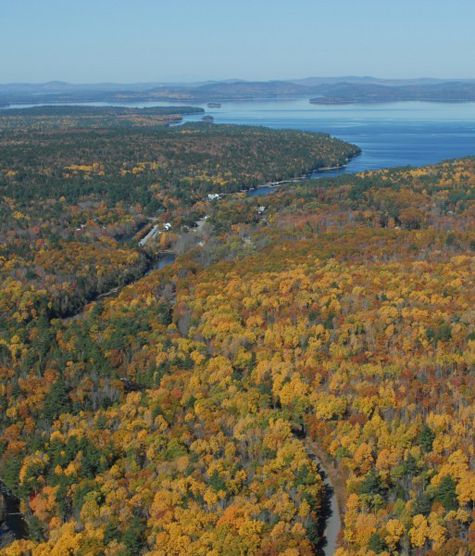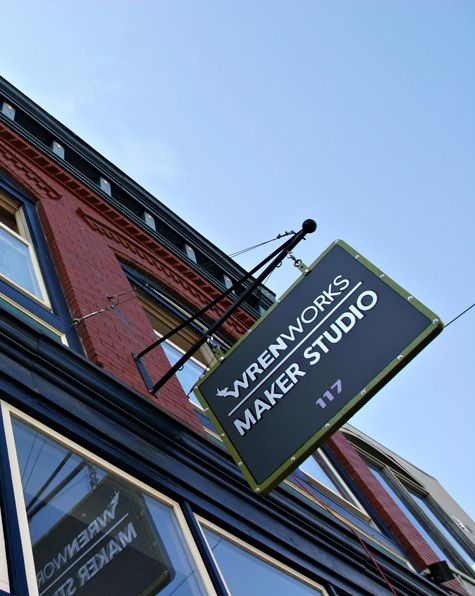
Screamin Ridge farm, Vermont / Screamin Ridge
New Urbanism is a well-known movement that aims to create more walkable communities. Less known is New Ruralism, which is focused on the preservation and enhancement of rural communities beyond the edge of metropolitan regions. Small towns now part of this nascent movement seek to define themselves on their own terms, not just in relation to nearby cities. These towns are more than “just food sheds for metro areas,” explained Peg Hough, Vermont, planner and environmental advocate with Community-resilience.org, at the American Planning Association (APA) annual conference in New York City. Representatives from three northeastern states — Vermont, Maine, and New Hampshire — explained how the principles of New Ruralism can help suffering communities.
In many struggling small northeastern rural towns, the drug epidemic has ravaged communities already weakened by the loss of manufacturing jobs. But it’s clear there are also many using “creative economy” approaches to revitalize themselves. Through her organization, Hough has collected case studies of success stories in Vermont. The communities making themselves more resilient share some important values: “volunteerism, empowerment, ingenuity, creativity, cooperation, entrepreneurism, local ownership, and self-sufficiency,” Hough said, adding that “leadership is key.”
In Vermont, the farm-to-plate economy, a “state-wide but closed-loop” system, now accounts for $8.6 billion, up 24 percent since 2007. There are 7,300 farms, employing 61,000 farm workers, on 1.2 million acres of farmland. Community-supported agriculture (CSA) models have helped farms like Screamin’ Ridge Farm flourish (see image above). Screamin’ Ridge turns left-over imperfect vegetables, which are often discarded as food waste, into soups that are served in schools, hospitals, and other institutions. “They aren’t serving the metro areas.”
Other efforts to boost self-sufficiency: the Thetford Home Energy Action Team (HEAT), a community-based group that trained 50 volunteers from the Thetford community and sent them out to educate other homeowners about weatherization and solar energy options. And on Water Street in the town of Northfield, the community undertook “flood recovery at the neighborhood scale.” A cooperative of 100 homeowners banded together to elevate the most-affected homes and turn the worst-flooded areas into a park.

Thetford Home Energy Action Team (HEAT) project in Vermont / Vital Communities
Lynne Seeley, a community planning consultant, detailed positive bottom-up efforts in mostly-forested, half-uninhabited Maine, the “least dense state east of the Mississippi.” In Grand Lake Stream, a town of just 109 souls, a land trust was formed in 2001 to protect the renowned outdoor recreation areas where people come to fish for salmon. Some 370,000 acres of lakeshore, forest, and wildlife habitat was protected. Seeley said the trust, which has had a tough time raising money, sees their future selling their forest’s carbon credits in cap and trade programs.

Great Lake region. Downeast Lakes Land Trust / Conservation Alliance
In Lubec, a town of 1,350, which is the easternmost community in the U.S., and also the poorest in all of Maine, there’s a new community outreach center where 110 volunteers (nearly 10 percent of the whole town) provide some 1,100 hours of community service a year. An associated food bank serves 20 percent of the community. And in Deer Island, which has 1,975 people, there’s the 12th largest employee-run coop in the country, which now runs three stores, including the local hardware store. CEI helped organize the financing. “This is rugged New Ruralism,” Seeley said.
In New Hampshire, Jo Anne Carr, director of planning and economic development for the town of Jaffrey, highlighted the work of the Women’s Rural Entrepreneurial Network (WREN), founded in 1984, which has grown from a pilot with 12 low-income women and now has 1,400 members. In Bethelem, WREN got the Omni hotel to create a gallery featuring artists in their network. Downtown, there’s a retail marketplace with some 300 vendors. If a woman wants to become a “WRENegade,” they have to “agree to put themselves out there and become a vendor at a market.” WREN also launched a new maker space in the city of Berlin where women can access “WiFi, latops, CNC machines, laser cutters and printers.”

WREN Makers’ Studio / NHPR
The Plymouth Area Renewable Energy Initiative (PAREI) adapted the age-old concept of a community barn-raiser to create an “energy raiser” in which members volunteer two-to-three times a year at residential solar installations, in turn learning new skills. As volunteers do the installation, they also lower the costs for the homeowner. PAREI has completed 35 energy raisers in 11 towns, including one for the local homeless shelter, which saved the organization $5,100 in annual energy costs.
Lastly, Monadnock at Home, a program for a 10-town region, provides service for 90 elderly households “aging in place,” including helping them avoid frauds and scams, providing transportation to appointments, and organizing social events to help reduce isolation. The organization has pre-screened 100 service providers that can provide small jobs around the house.
Carr reiterated that New Ruralism is really driven by “community leadership, volunteerism, and creative financing.”
